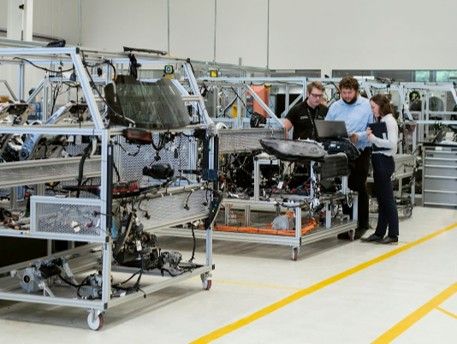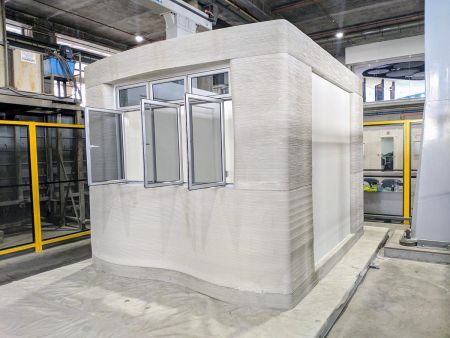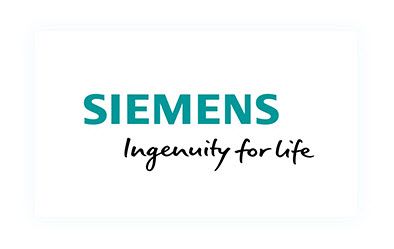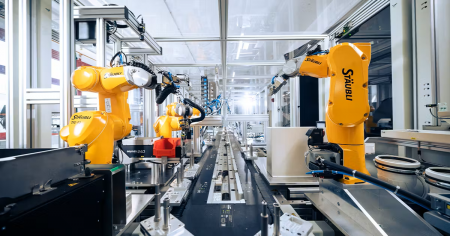
Becoming a leader in the manufacturing industry means doing everything you can to maximise productivity on the line, while reserving human effort for complex tasks. Increasingly, companies are doing this using two distinct fields: automation and robotics.
While these umbrella terms can be helpful in general discussions, implementing automation effectively requires a deeper understanding of the types of automation, of which there are four.
Read on for a breakdown of the baseline differences between automation and robotics, as well as an exploration of the four different types of automation, culminating in the ‘holy grail’ of the industry: totally integrated automation.
Automation vs. Robotics: A Key Distinction
In the industrial world, the terms ‘automation’ and ‘robotics’ are often used interchangeably. This is not entirely incorrect, as the two are closely related. That said, for engineers to carefully implement both technologies onto a manufacturing line while maximising their capabilities, it’s vital to see the gap between the two.
- Robotics in manufacturing primarily utilises machines, leveraging adaptability and intelligence to accomplish physical tasks. These can be automated, but they can also be worked on manually.
- Automation in manufacturing can be driven through software agents or robotics (generally some combination of the two). This field focuses on maximising efficiency, and often provides the blueprint for robotics working autonomously on a line.
The overlapping nature of these two titanic industries within manufacturing can make them seem of the same scale, but the truth is that robotics is a sub-category of automation (for the purposes of this application).
The 4 Types of Automation
-
Type 1: Fixed Automation
Fixed automation (also known as hard automation) is designed for high-volume production where tasks are repetitive. These systems are built to perform a specific set of operations and are not easily reconfigured.
Think of classic assembly lines in car manufacturing; a conveyor moves the chassis through stages, and fixed machinery performs welding, painting, and installing.
This solution offers a high production rate with consistent product quality, but it comes at the cost of significant inflexibility. Any changes to your product’s design would require a significant system redesign and cost. To that end, fixed automation – unlike totally integrated automation – is ideal when the output is consistent and unchanging.
-
Type 2: Flexible Automation
You might have heard flexible automation referred to as ‘soft’ automation. As the name implies, this type of automation enables the production of a variety of products without any time-consuming changeovers. This style of automation is typically driven by software, using versatile equipment like CNC machines or industrial robots that can perform multiple tasks.
The enhanced adaptability here makes flexible automation an ideal choice for batch processes or periodic product variations. That said, the higher upfront cost and complexity of implementation can be a barrier for some companies.
-
Type 3: Programmable Automation
Bridging the gap between fixed and flexible systems is programmable automation, an approach that allows equipment to be reprogrammed between batches. In many instances by simply selecting a new pre-configured ‘recipe’ from the system’s HMI. This built-in adaptability means your online robotics is able to handle different tasks or products for different batches. It’s no surprise, then, that this approach is popular in metal forming, web processing, or large-scale food manufacturing.
These are much easier to reconfigure than fixed systems, accommodation production variety in a way that offers economy of space. That said, the downtime during reprogramming and the requirement for skilled personnel on the line if the changes can’t be handled by a recipe can be off-putting for manufacturers who value speed.
-
Type 4: Totally Integrated Automation
Finally, we have totally integrated automation. This represents the future of manufacturing, where a fully harmonised system incorporates machinery, control systems, software, and data analytics that are all unified through a single central framework.
For manufacturers who value real-time optimisation and complete visibility or control, totally integrated automation is the solution. While it is high in complexity and requires expert design and implementation, once the system is in place, it only serves to benefit your facility.
Not only is totally integrated automation an excellent way to streamline what would have once been siloed systems, it’s also scalable across multiple locations in a way that unifies your entire production ecosystem.
More and more manufacturers are adopting totally integrated automation as a way to stay competitive in an increasingly automated market. Facing down the fourth industrial revolution (a.k.a. Industry 4.0) is all about scaling up integration to the nth degree, and this system allows you to do so while maintaining flexibility should products shift and change according to business trajectory.
In summary, we have the four types of automation: fixed, flexible, programmable, and totally integrated automation. Each has its place in the modern manufacturing vertical, but for companies wanting to truly maximise what their facilities can do, total integration is the way to go.
Overcome your industry’s challenges with cost-effective automation.
At CNC Design, we understand the commitment and foresight required for you to become an industry leader. We design and supply cost-effective, totally integrated automation solutions, including robotic process automation, to help you access a quick turnaround on your investment.
Reach out today to benefit from our world-class robotics and automations partnerships.











